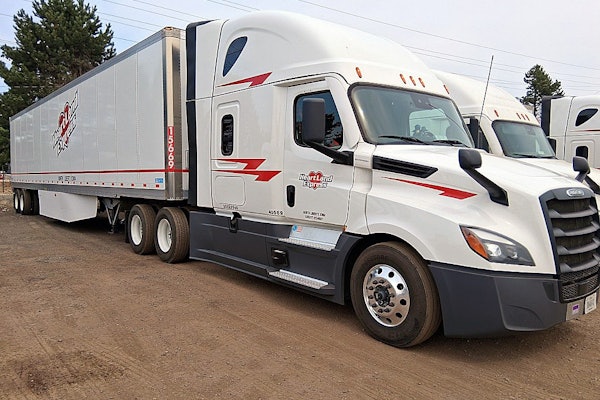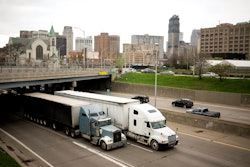Despite persistent headwinds, carriers have largely stayed resilient, leaving the market oversupplied, according to a recent report.
Arrive Logistics’ Truckload Freight Forecast report points to continued soft demand through the remainder of 2025, with a modest rate growth heading into 2026.
“Tariff impacts will begin to compound in the back half of 2025 and carry into 2026, limiting the potential for demand growth. Additional demand destruction will result in more capacity leaving the market,” the report said.
Holiday surges and seasonal swings will continue to add short-lived volatility in the spot market, it said. Carrier attrition may amplify these disruptions, but only a “large-scale black swan event could create a sustained disruption.”
Global trade policy uncertainty also clouds the longer-term outlook, the report added.
While holidays may see greater tightness and more elevated rates, the high rates are not likely to last once seasonality passes, said David Spencer, vice president of market intelligence at Arrive Logistics.
“For those with a strong book of contract business, it is not worth risking that business for a week or two of strong spot market rates. For those with options, it means that opportunities to earn more money are likely to present themselves at various times throughout the year,” Spencer said.
Late December, specifically the last two weeks, stands out as the prime earning period, he added.
“Shipper urgency will be high, lots of drivers will be taking time off for the holidays, and the risk of severe winter weather will be on the table," Spencer said.
[RELATED: FTR: Supply constraints will drive trucking recovery]
As for demand, the report noted that retail imports, which normally provide a late-year lift, will soften after heavy front-loading in the first half ahead of tariffs.
Brian Whitlock, vice president of Gartner's supply chain practice, pointed to several factors leading toward the softening of transportation volumes through the end of the year. First, the effective tariff rate jumped from a historical 2.3% to 5.3% in the first half of 2025, generating $53 billion in incremental duty costs. With August’s tariff changes pushing the effective rate to an estimated 20% for the reminder of the year, incremental duty costs could reach $250 billion to $300 billion.
“The impact of these costs will be a reduction in imports as well as price increases to consumers and buyers as manufactures and sellers will be unable to fully absorb tariffs,” Whitlock said.
Consumer sentiment and rising prices will likely dampen end-consumer demand, reducing import volumes in the second half, he added.
The National Retail Federation reported first-half ocean container volumes rose 3.6% year over year as companies front-loaded inventory, but it forecasts a 3.4% decline in the back half and a sharp 19.1% drop in January 2026.
Jason Miller, a professor of supply chain management at the Eli Broad College of Business at Michigan State University, also pointed to other demand headwinds, including weak oil and gas activity. Manufacturers’ new orders also fell into contraction territory in September, according to the Institute for Supply Management report.
Miller said single-family housing permits have fallen sharply since March, down 11% year over year as of August.
In a State of Freight webinar this week, Avery Vise, VP of trucking at FTR, mentioned that manufacturing output has been flat since 2019 and noted that flatbed’s recent strength was tariff-related, not organic.
With fewer housing permits, it signals less construction demand supporting flatbed freight in the market.
Another layer of concern is the uncertainty of pending tariff expirations, Whitlock pointed out. Mexico’s 30% tariff pause ends Oct. 30, while China’s expires Dec. 1, and new rules of origin may double tariff rates for select Asian countries.
Uncertainty and volatility in tariff levels are paralyzing corporate spending and limiting large-scale capital investment, Spencer said.
“While I believe that tariffs are inflationary, which should result in lower retail demand, stable tariff levels and clarity around future global trade conditions could also spark an increase in activity and truckload demand,” he added.
Looking at the supply side, the report noted that declining equipment orders that have fallen below replacement levels could suggest that capacity will gradually tighten.
It also pointed out how regulatory hurdles, including English language proficiency requirements, will continue to constrain driver supply, limiting how quickly capacity can be added after disruptions.













